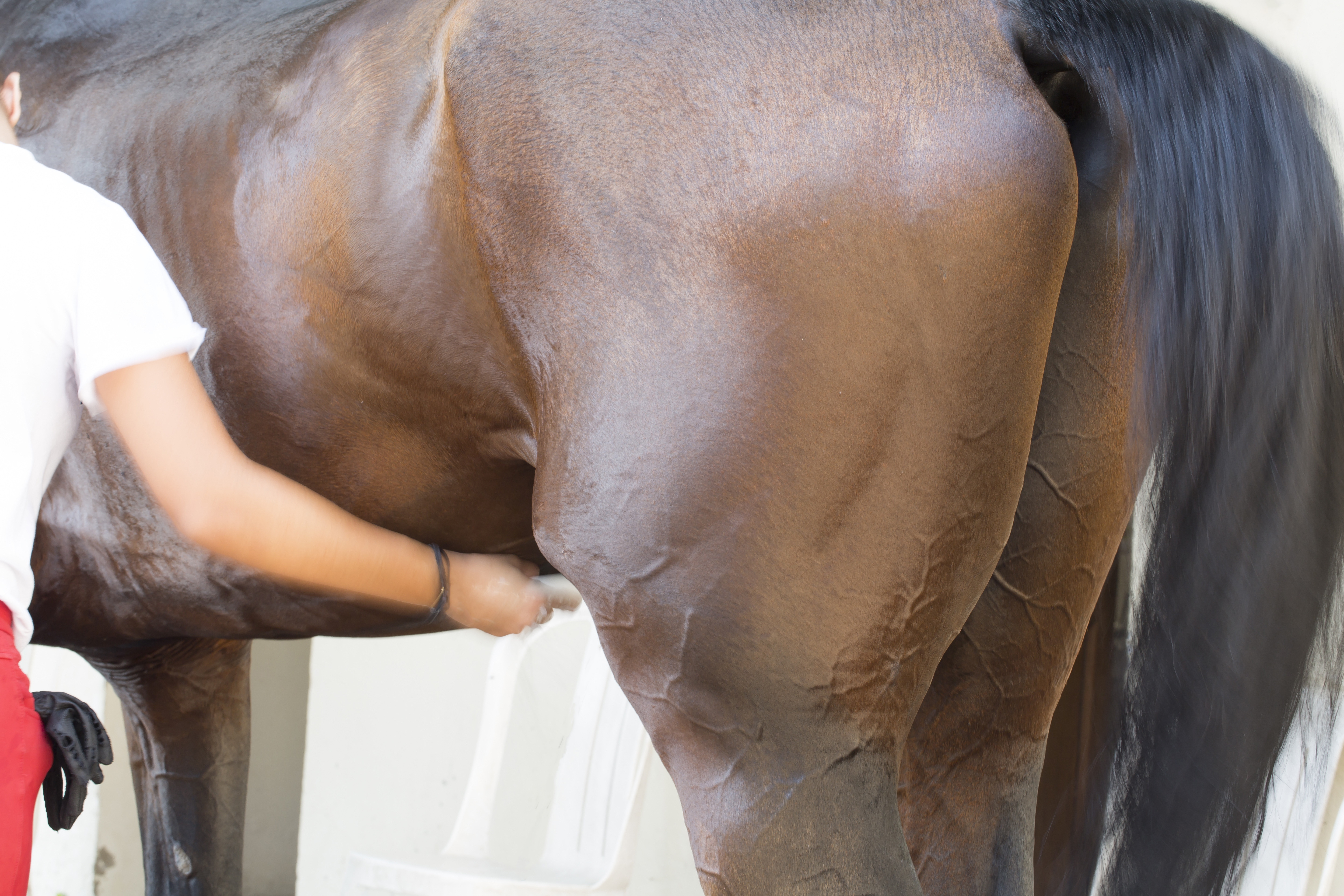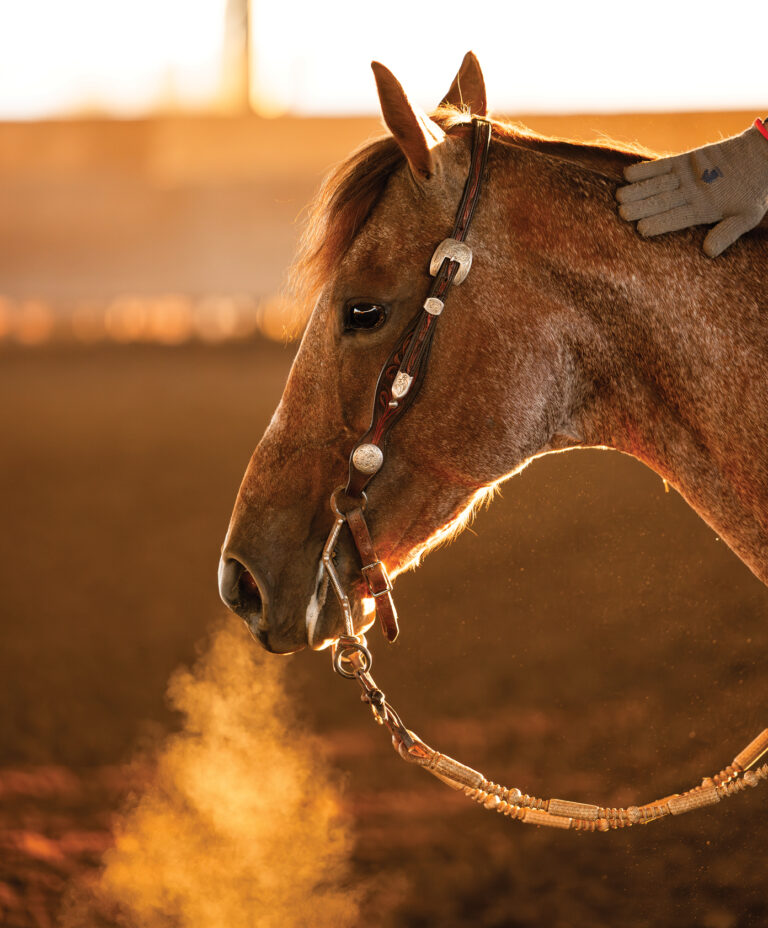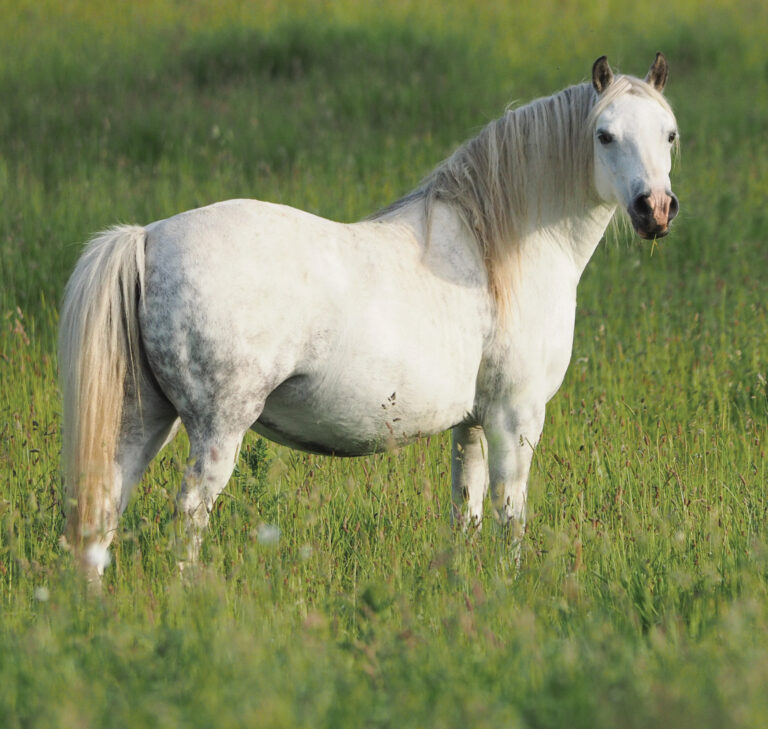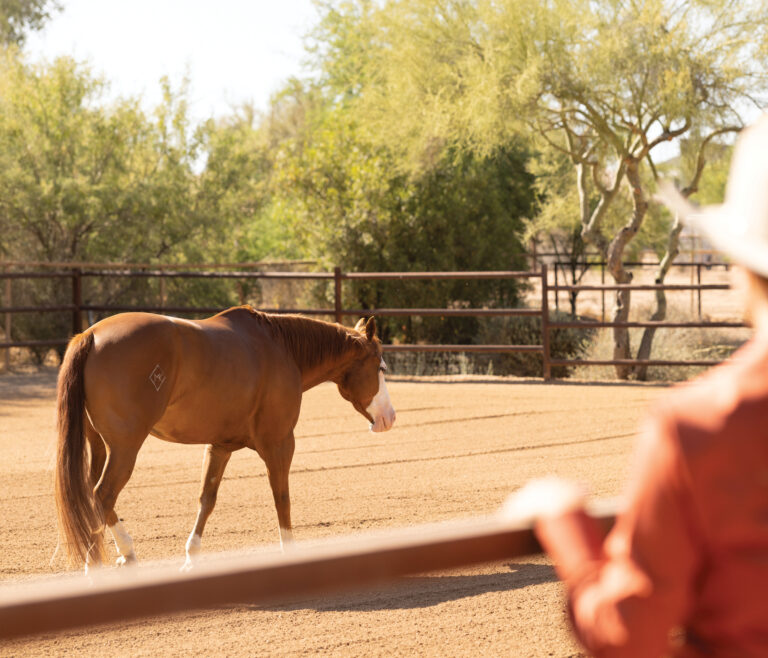
Fact Vs. Fiction
Fiction: It’s a nasty job, but if I clean my horse’s sheath frequently, it won’t be as bad.
Fact: Your horse’s sheath has a population of “friendly” microorganisms that help maintain a healthy balance within. If you clean it too frequently, you’ll kill these microorganisms, disrupting this balance—and your horse’s sheath is likely to get even dirtier. It’s best to clean his sheath every 6 to 12 months.
Fiction: To really clean my horse’s sheath, I should use an antibacterial soap, such as Betadine or chlorhexidine.
Fact: To protect those friendly microorganisms, never use antibacterial soap. Use a commercial sheath cleaner, such as Excalibur or Equi-Pro. These products cut through the grease, have a pleasant odor, and make sheath cleaning easier. Warm water also helps cut grease—and your horse will like it better.
Fiction: My horse swishes his tail and sometimes raises a hind leg when I clean his sheath, but he’d never kick me.
Fact: Don’t be so sure! Some horses really resent this procedure. They’ll not only kick–but they’ll do so fast and hard. To be safe, stand well forward, by your horse’s shoulder, and reach back to his sheath. If he continues to threaten you, he may need to be sedated by your veterinarian. (Tip: To save time and money, ask your vet to clean your horse’s sheath during another routine procedure that involves sedation, such as dentistry.)
Fiction: I can’t clean my horse’s sheath unless he drops his penis—which he won’t do unless he’s sedated.
Fact: You can do a very thorough job even when your horse hasn’t dropped–simply by reaching up inside. In this case, you’ll need to go in up to your elbow, so wear a long disposable glove to avoid getting the greasy, smelly smegma on your arm and sleeve. Ask your vet for an obstetrical glove—it’s perfect for the job. You’ll also need a bucket of warm water and about 20 heavy-duty paper towels. To clean your horse’s sheath, put a generous dollop of sheath cleaner (about 2 to 3 tablespoons) in your hand, along with a wet towel. Reach up into your horse’s sheath, and gently work the accumulated grime loose. When the towel gets soiled, grab a new one, and keep working until the towel comes back clean. Clean all the way from his sheath’s opening up to the base of his penis. Depending on how dirty the sheath is, you may need to use additional cleaner as you go.
Fiction: Once I’ve gotten rid of the grime, the job is done.
Fact: Not yet. Once you’ve removed the smegma, check for and remove the bean-a ball of whitish goo that forms within a small pocket at the tip of your horse’s penis. If not removed, a bean can get as large as a walnut and obstruct urine flow, which can cause your horse discomfort and potential harm. If you don’t know how to remove the bean, ask your vet to show you.
Finally, rinse thoroughly with clean water and clean towels. Or, if your horse will tolerate it, run the hose up inside his sheath. You’ll know you’ve done a thorough job when the paper towel in your hand comes out as clean as it went in, and the rinse water runs clear.




